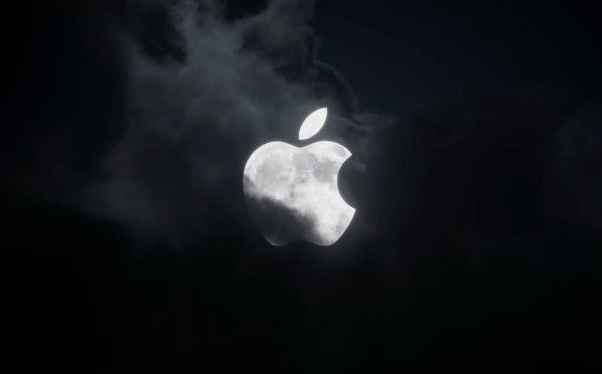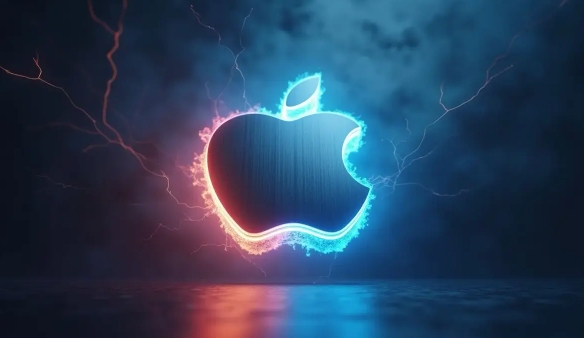Installing macOS From the DMG file, you need to prepare to boot the USB drive and write to the mirror. 1. Prepare at least 16GB USB drive and format it as "Mac OS Extension (Log Style); 2. Use the terminal commands hdiutil verify, hdiutil mount and asr restore to write DMG to the USB drive; 3. If you only need to view or extract content, you can directly mount the DMG file and drag and install the application; 4. If you encounter write protection or permission problems, you can try to repair the disk, re-download the file, or convert the format to IMG before operating. The entire process requires ensuring that the DMG file is legal and complete before the system installation can be successfully completed.

Installing macOS from DMG files is not actually complicated, but many people will be a little confused when they first operate it. DMG is a common disk image format under macOS and is usually used to distribute software or system installation packages. If you have a macOS DMG file and want to use it to install the system, the following steps and precautions can help you complete it smoothly.

Prepare an available boot USB drive
Before you start, you need to prepare a USB drive with at least 16GB capacity and make sure it has no important data (which will be formatted during operation).
Next you can use the tool to convert the DMG file into a bootable installation media. Common methods include using command line tools hdiutil and asr , or using third-party tools such as TransMac (there are corresponding versions on Mac or Windows).

The specific process is roughly as follows:
- Insert the USB drive
- Open Disk Utility, select the USB drive and format it as Mac OS Extensions (Logistics)
- Use the terminal run command to write DMG to the USB flash drive, for example:
hdiutil verify yourfile.dmg hdiutil mount yourfile.dmg asr restore --source /Volumes/YourMountedDMG --target /Volumes/YourUSB --erase
After this step is completed, your USB drive becomes a boot disk that can bootstrap macOS installation.

Mount DMG files and use them directly
If you just want to see what is in the DMG file, or if it contains an application rather than a complete system, you can directly mount it to view it.
After double-clicking the DMG file, it will automatically appear on the desktop, just like a hard disk is inserted. You can drag and drop the App file inside to the "Applications" folder for installation.
But note: This method cannot be used to install a complete macOS system, it is only suitable for extracting content or installing ordinary applications.
What should I do if I encounter write protection or permission issues?
Sometimes you may encounter situations where DMG files cannot be mounted, prompt write protection, or permission errors. There may be several reasons for this:
- The file itself is corrupted, so it is recommended to download it again;
- Disk Utility is incompatible, try to manually mount it using terminal;
- For permission setting issues, you can select the disk in "Disk Utility" and click "First Aid" to fix it;
If it still doesn't work, you can try converting DMG to IMG format and then writing to the USB flash drive:
hdiutil convert yourfile.dmg -format UDTO -o outputfile.img
Basically these are the steps. Although it seems a bit cumbersome, it is actually not difficult to do it step by step. The key is to confirm that the DMG file on your hand is a legal and complete system image, otherwise it will not be installed normally even if the write is successful.
The above is the detailed content of How to install macOS from a DMG file?. For more information, please follow other related articles on the PHP Chinese website!

Hot AI Tools

Undress AI Tool
Undress images for free

Undresser.AI Undress
AI-powered app for creating realistic nude photos

AI Clothes Remover
Online AI tool for removing clothes from photos.

Clothoff.io
AI clothes remover

Video Face Swap
Swap faces in any video effortlessly with our completely free AI face swap tool!

Hot Article

Hot Tools

Notepad++7.3.1
Easy-to-use and free code editor

SublimeText3 Chinese version
Chinese version, very easy to use

Zend Studio 13.0.1
Powerful PHP integrated development environment

Dreamweaver CS6
Visual web development tools

SublimeText3 Mac version
God-level code editing software (SublimeText3)

Hot Topics
 Where is the pycharm interpreter?
May 23, 2025 pm 10:09 PM
Where is the pycharm interpreter?
May 23, 2025 pm 10:09 PM
Setting the location of the interpreter in PyCharm can be achieved through the following steps: 1. Open PyCharm, click the "File" menu, and select "Settings" or "Preferences". 2. Find and click "Project:[Your Project Name]" and select "PythonInterpreter". 3. Click "AddInterpreter", select "SystemInterpreter", browse to the Python installation directory, select the Python executable file, and click "OK". When setting up the interpreter, you need to pay attention to path correctness, version compatibility and the use of the virtual environment to ensure the smooth operation of the project.
 The difference between programming in Java and other languages ??Analysis of the advantages of cross-platform features of Java
May 20, 2025 pm 08:21 PM
The difference between programming in Java and other languages ??Analysis of the advantages of cross-platform features of Java
May 20, 2025 pm 08:21 PM
The main difference between Java and other programming languages ??is its cross-platform feature of "writing at once, running everywhere". 1. The syntax of Java is close to C, but it removes pointer operations that are prone to errors, making it suitable for large enterprise applications. 2. Compared with Python, Java has more advantages in performance and large-scale data processing. The cross-platform advantage of Java stems from the Java virtual machine (JVM), which can run the same bytecode on different platforms, simplifying development and deployment, but be careful to avoid using platform-specific APIs to maintain cross-platformity.
 Commands and configurations for starting Apache service in macOS system
May 16, 2025 pm 10:00 PM
Commands and configurations for starting Apache service in macOS system
May 16, 2025 pm 10:00 PM
The command to start the Apache service on macOS is sudoapachectlstart, and the configuration file is located in /etc/apache2/. The main steps include: 1. Edit the httpd.conf file, modify the Listen port such as Listen8080; 2. Adjust the DocumentRoot path to the personal directory such as /Users/your_username/Sites, and update the corresponding permission settings; 3. Use the sudoapachectlgraceful command to restart Apache to ensure that the configuration takes effect; 4. Enable the mod_deflate module to compress data to improve page loading speed.
 How to stop Microsoft Edge automatic updates
May 21, 2025 am 10:12 AM
How to stop Microsoft Edge automatic updates
May 21, 2025 am 10:12 AM
How to stop Microsoft Edge Automatically Update Microsoft Edge is the default browser that comes with Windows 11. Earlier, the Edge browser received updates as the Windows operating system was updated. However, the Edge browser based on Chromium has changed that. The browser will now automatically update in the background without your knowledge. In this article, we will explain how to stop automatic Microsoft Edge updates in Windows 11 and macOS. Related: How to disable automatic updates in Google Chrome? Check for automatic edge updates Chromium-based Edge vs. Goo based on Chromium backend code
 MySQL installation tutorial teach you step by step the detailed steps for installing and configuration of mySQL step by step
May 23, 2025 am 06:09 AM
MySQL installation tutorial teach you step by step the detailed steps for installing and configuration of mySQL step by step
May 23, 2025 am 06:09 AM
The installation and configuration of MySQL can be completed through the following steps: 1. Download the installation package suitable for the operating system from the official website. 2. Run the installer, select the "Developer Default" option and set the root user password. 3. After installation, configure environment variables to ensure that the bin directory of MySQL is in PATH. 4. When creating a user, follow the principle of minimum permissions and set a strong password. 5. Adjust the innodb_buffer_pool_size and max_connections parameters when optimizing performance. 6. Back up the database regularly and optimize query statements to improve performance.
 Which is better, uc browser or qq browser? In-depth comparison and evaluation of uc and qq browsers
May 22, 2025 pm 08:33 PM
Which is better, uc browser or qq browser? In-depth comparison and evaluation of uc and qq browsers
May 22, 2025 pm 08:33 PM
Choosing UC browser or QQ browser depends on your needs: 1. UC browser is suitable for users who pursue fast loading and rich entertainment functions; 2. QQ browser is suitable for users who need stability and seamless connection with Tencent products.
 How to update the system's own software
May 19, 2025 pm 06:48 PM
How to update the system's own software
May 19, 2025 pm 06:48 PM
Updating the software that comes with macOS is simple and important because it can fix bugs, improve performance, bring new features and security improvements. You can update through the "Software Update" option in "System Settings" or "System Preferences" and follow the prompts. If you encounter problems, try restarting your Mac or checking your network connection, and the Apple Support page also provides a solution. It is recommended to keep the system up to date, back up data before update, and ensure Wi-Fi and sufficient storage space. Update details can be viewed on Apple's official website.
 How to adjust screen brightness on macOS
May 16, 2025 pm 08:39 PM
How to adjust screen brightness on macOS
May 16, 2025 pm 08:39 PM
Adjusting screen brightness on macOS can be fine-tuned using the brightness adjustment keys on the keyboard or through system preferences. 1. Press the Sun icon keys on the F1 and F2 keys to quickly adjust the brightness. 2. Drag the slider in the "Display" option in "System Preferences" to make minor adjustments. 3. Enable the "Auto-adjust brightness" function to make the brightness change with the ambient light. 4. Use the "Night View" mode to reduce blue light to protect your eyes. 5. Developers can use AppleScript to automate brightness adjustments.






